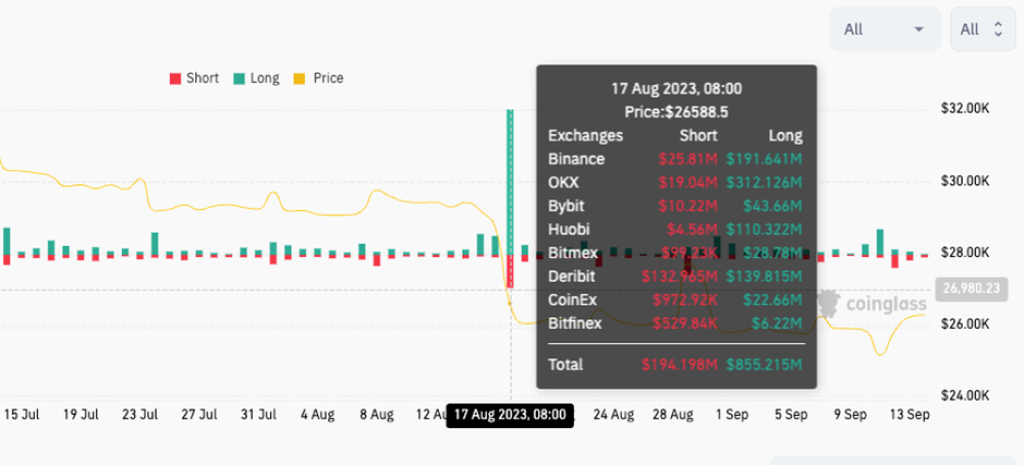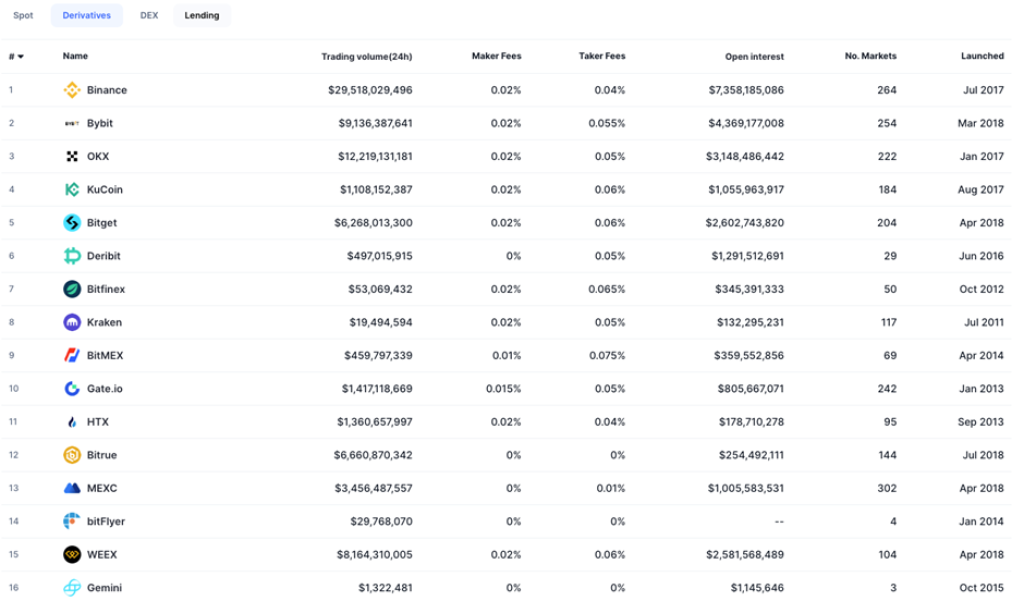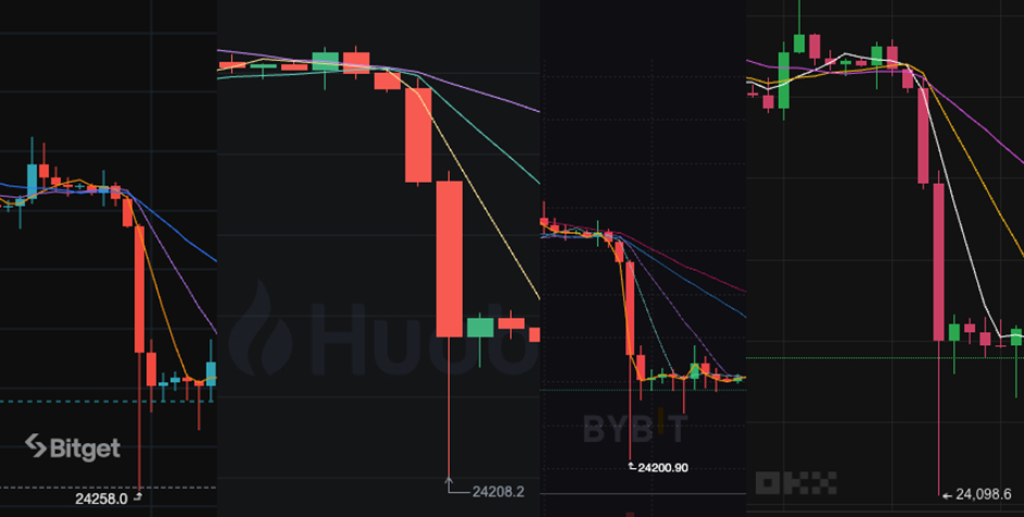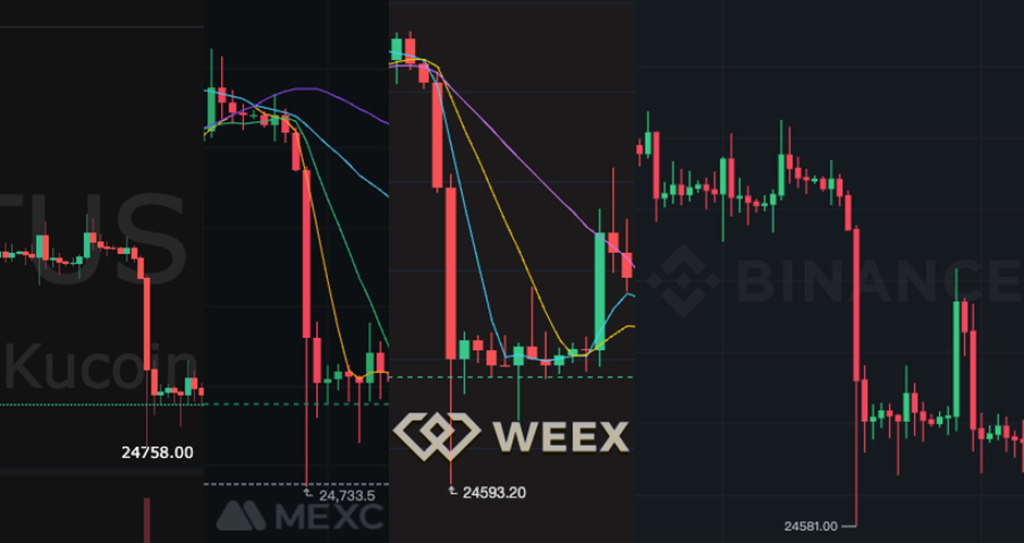
On August 18, 2023, Bitcoin experienced a 7.33% drop in a 24-hour period with a volatility of 12.59%, marking it as the most severe day in the crypto market since the beginning of the year, leading to a total of 1 billion USD in liquidations, referred to as the “818 Tragedy.” The last such event was in November of the previous year, known as the “Crypto Lehman Moment,” where FTX’s collapse shattered industry confidence, causing Bitcoin to drop by 9.93% and 14.15% on November 8th and 9th, respectively.
Compared to the November events, which were characterized by unexpected events and widespread FUD, the plunge on 8.18 seemed somewhat inexplicable. There were no major bearish news or data releases, and it wasn’t a significant event like futures expirations or central bank decisions. The stock market remained relatively uneventful, with mixed movements in the three major U.S. indices.
The only notable bearish news was the dismissal by a court of six plaintiffs’ allegations that the U.S. Treasury’s sanctions on the privacy protocol Tornado Cash last year constituted an overreach, but this had limited impact on the industry. Some analysts attributed this plunge to the liquidation of long futures, but this seemed somewhat counterintuitive.

Regardless of the reasons for the crash, the market is objective, and when hit, one must stand firm. After being hit by the market, the only thing we can do is review and learn from the experiences of each liquidation as stepping stones on the path to finding the Holy Grail of trading.
There are many factors that affect trading success, including trading discipline, analytical abilities, market intuition, and luck. Additionally, one crucial factor is the trading depth of the platform, especially in extreme market conditions like the “818 Tragedy.” Platforms with good depth can help maintain relatively stable prices when handling large orders, preventing overly drastic fluctuations. Conversely, platforms with poor depth are susceptible to being pierced by large unidirectional orders, such as futures liquidations, resulting in slippage and potential liquidations.
If a platform lacks depth, it results in significant slippage, making it challenging for users looking to buy low or short at the peak to execute trades at their desired prices. This can lead to missed opportunities or executed trades far from the ideal price, potentially turning profitable strategies into losses. Therefore, for any exchange, in addition to factors like overall strength and security, trading depth is a critical consideration for users when choosing a platform.
WEEX is renowned for its trading depth, and has now joined the top tier of global exchanges, ranking sixth in CMC’s global average liquidity ranking.
Its order book thickness and spread are superior to most other trading platforms, closely following Coinbase and Binance. This minimizes trading costs and liquidity risks for many professional traders and high-frequency trading users, earning recognition from the community.

Let’s take the BTC/USDT perpetual futures as an example and examine the order book situations on various platforms during the 8.18 crash.
Based on statistics, at around 5:40 AM Singapore time on August 18th, platforms with the lowest BTC/USDT prices, from low to high, were: OKX, Bybit, Huobi, Bitget, Binance, WEEX, MEXC, and Kucoin.

In other words, during this market crash, Kucoin, MEXC, and WEEX had the smallest price deviations, reducing the chances of investors getting liquidated. If a trader’s liquidation price was set at $24,500 USDT, trading on Kucoin, MEXC, WEEX, or Binance would have avoided liquidation, while trading on OKX, Bybit, Huobi, or Bitget would have led to liquidation. This is the value of trading depth, it can be a lifesaver in critical moments, determining whether investors survive or face financial ruin.

For traders, one of the biggest nightmares is when the market suddenly reverses, and find yourself liquidated. That’s why picking a platform with better liquidity is absolutely important. So, how would you go about choosing a platform from your perspective?








